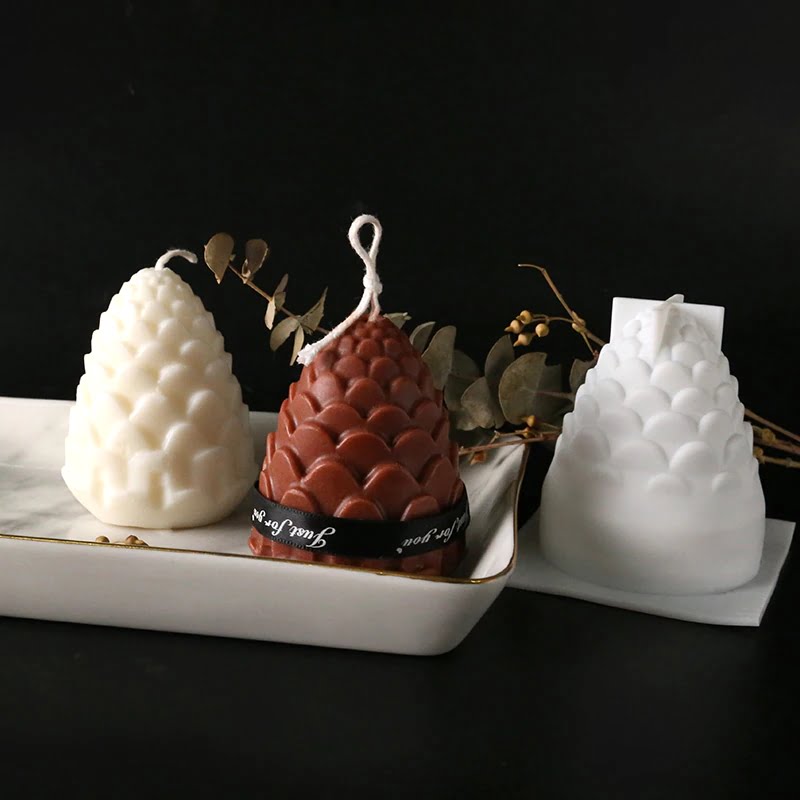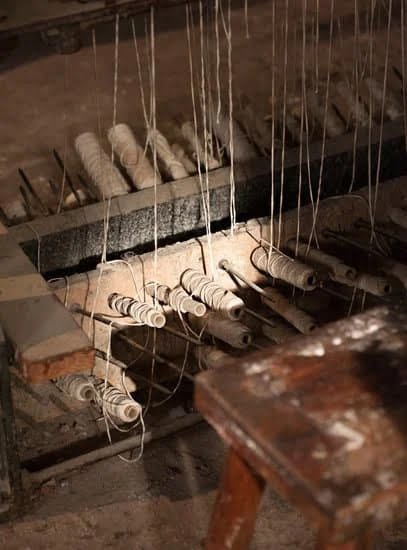Stearic acid is a versatile substance with various applications in different industries, including candle making. In this article, we will explore the uses and significance of stearic acid in the process of creating candles. From its role in enhancing candle performance to its impact on the environment, stearic acid plays a crucial part in the candle making industry.
Stearic acid is a saturated fatty acid that is commonly derived from natural sources such as animal fats and vegetable oils. It is widely used in the production of various products ranging from cosmetics to food items. In candle making, stearic acid serves multiple purposes, including improving the burning time and stability of candles. Its ability to enhance the appearance and performance of candles makes it an essential ingredient for many candle makers.
The importance of stearic acid in candle making cannot be overstated. This article will delve into the role of stearic acid in enhancing different types of candles, how it affects their performance, practical tips for using it effectively, and more. Whether you are a seasoned candle maker or someone interested in learning about the intricacies of candle production, understanding the uses and significance of stearic acid is crucial for producing high-quality candles.
The Role of Stearic Acid in Candle Making
Stearic acid is a saturated fatty acid that is derived from animal and vegetable fats and oils. It is a crucial ingredient in many industries, including the production of candles. In candle making, stearic acid serves multiple purposes, playing a significant role in enhancing the quality and performance of the final product.
One of the primary uses of stearic acid in candle making is to improve the hardness and texture of the wax. By adding stearic acid to the wax mixture, candle makers can create candles that are more durable and less prone to melting or warping during storage or shipment. Additionally, stearic acid helps to shrink and solidify the molten wax, which contributes to a smoother finish and reduces surface imperfections on the candles.
Moreover, stearic acid aids in increasing the opacity of candles, resulting in a more vibrant appearance when pigments or dyes are added to the wax. This makes it an essential component for creating colored or decorative candles. The use of stearic acid also contributes to better mold release and reduces air bubbles trapped within the candle, leading to an overall improved visual appeal of the finished product.
In addition to its practical benefits for candle making processes, stearic acid also plays a role in extending burn time and improving scent throw. By incorporating stearic acid into their formulations, candle makers can produce longer-lasting candles that emit fragrances more effectively throughout their use. Overall, it is clear that stearic acid has a multitude of uses in enhancing various aspects of candle making processes and final products.
| Benefit | Impact |
|---|---|
| Improved hardness | Creates durable candles less prone to melting |
| Enhanced opacity | Results in vibrant appearance when pigments or dyes are added |
| Extended burn time | Produces longer-lasting candles with better scent throw |
Types of Candles That Benefit From Stearic Acid
Pillar Candles
Pillar candles are one of the most common types of candles that benefit from the use of stearic acid. This is because stearic acid helps to harden the wax, making it more suitable for creating pillar candles. The addition of stearic acid also increases the opacity and whiteness of the candle, resulting in a more aesthetically pleasing appearance. Additionally, stearic acid improves the burn time and overall stability of pillar candles, making them a popular choice for many candle makers.
Taper Candles
Taper candles, known for their elegant and slender shape, also benefit from the inclusion of stearic acid in their composition. By using stearic acid, taper candles become less prone to bending or drooping during burning, as it increases their resistance to heat. This results in a more uniform burn and a longer-lasting candle. Moreover, stearic acid can enhance the color intensity of taper candles, allowing for a more vibrant and attractive finished product.
Container Candles
The versatility and popularity of container candles make them another ideal candidate for incorporating stearic acid into their formulation. When added to container candle wax, stearic acid provides better adhesion to the walls of the container, preventing “tunneling” and ensuring an even burn throughout the life of the candle. Furthermore, it enhances fragrance retention and reduces surface mottling, leading to a cleaner and more visually appealing finished product.
Overall, these various types of candles all benefit from incorporating stearic acid into their production process due to its ability to improve burn time, stability, appearance and overall performance.
How Stearic Acid Affects Candle Performance
Stearic Acid plays a crucial role in determining the performance of candles. This section will delve into how stearic acid influences the burning time, stability, and appearance of candles.
Burning Time
One of the key benefits of using stearic acid in candle making is its ability to increase the burning time of candles. When stearic acid is added to the wax, it hardens the candle, which results in a slower burn rate. This means that candles made with stearic acid will last longer, allowing for extended enjoyment by consumers. The addition of stearic acid also reduces dripping and excess smoking during burning, contributing to a cleaner and more efficient burning process.
Stability
Stearic acid is known for its ability to improve the stability of candles. By adding stearic acid to the wax, candle makers can create stronger and firmer candles that are less prone to warping or bending.
This is particularly important for specialty-shaped or molded candles that require a higher level of structural integrity. The presence of stearic acid also helps prevent softening or melting in high temperatures, making it an ideal additive for candles that are intended for outdoor use.
Appearance
In terms of appearance, stearic acid has a significant impact on the texture and finish of candles. When incorporated into the wax formulation, stearic acid can produce a smooth and glossy surface on candles, enhancing their overall aesthetic appeal. Additionally, stearic acid contributes to reducing mottling or uneven color distribution in candles, resulting in a more visually pleasing end product.
Tips for Using Stearic Acid in Candle Making
Stearic acid is a versatile and valuable substance that plays a crucial role in candle making. Its uses in candle making are varied, ranging from improving the hardness and opacity of candles to enhancing their burning time and stability. As such, incorporating stearic acid into the candle making process can greatly benefit candle makers looking to produce high-quality products.
One of the key benefits of using stearic acid in candle making is its ability to harden the wax, resulting in longer-lasting candles with a slower burn rate. This is particularly useful for creating pillar candles or taper candles that need to maintain their shape and structure during burning. Additionally, stearic acid can also increase the opacity of the wax, creating a more solid appearance for colored or scented candles.
When using stearic acid in candle making, it’s important for candle makers to follow specific guidelines to achieve optimal results. For example, adding too much stearic acid can lead to issues such as cracking or mottling in the finished candles. It’s essential to carefully measure and incorporate the right amount of stearic acid based on the type of candles being made and their intended purpose.
Ultimately, mastering the use of stearic acid in candle making requires practice and experimentation. Candle makers should carefully observe how different proportions of stearic acid affect the quality and performance of their candles and make adjustments accordingly.
| Role | Details |
|---|---|
| Hardening effect | Increases hardness and burn time of candles |
| Opacity enhancement | Creates solid appearance for colored or scented candles |
| Guidelines for use | Careful measurement and observation needed for best results |
Alternatives to Stearic Acid in Candle Making
Stearic acid is a saturated fatty acid that is commonly found in various animal and vegetable fats. It has a wide range of uses in different industries, including the production of candles. In candle making, stearic acid serves as an essential ingredient that contributes to the overall quality and performance of the finished product. The versatile nature of stearic acid allows it to be utilized in numerous types of candles, making it a popular choice among candle makers.
Alternatives to Stearic Acid in Candle Making
When it comes to creating candles, there are alternatives to using stearic acid that can achieve similar results. While stearic acid is a common additive in candle making, some individuals may prefer to explore other options for various reasons such as availability or specific preferences. Here are some alternatives to consider:
- Beeswax: Beeswax is a natural wax produced by honeybees and is often used as an alternative to stearic acid in candle making. It provides a pleasant honey-like aroma and has its own set of unique properties that make it desirable for creating high-quality candles.
- Paraffin Wax: Paraffin wax is a petroleum-derived wax that is often used as an alternative to stearic acid. It offers excellent scent throw and produces bright, vibrant colors when dyed, making it a popular choice for many candle makers.
- Palm Wax: Palm wax is another substitute for stearic acid and is derived from palm oil. It creates beautiful crystalline patterns on the surface of the candle as it cools, adding an aesthetic appeal to the finished product.
While these alternatives have their own set of advantages and disadvantages, they provide candle makers with flexibility and options when formulating their products.
In considering alternatives to stearic acid in candle making, it’s important for candle makers to weigh the pros and cons of each option based on their specific needs and preferences. Experimenting with different materials can lead to unique and innovative creations while still achieving exceptional performance and quality in the final candle product.
The Environmental Impact of Using Stearic Acid in Candles
Stearic acid is a versatile substance that has found its way into various industries, including candle making. This waxy substance, derived from natural sources such as animal fats and vegetable oils, plays a crucial role in the formation and performance of candles. With a molecular structure consisting of long hydrocarbon chains, stearic acid is ideal for use in candles due to its ability to harden wax, enhance opacity, and increase burn time.
In candle making, stearic acid serves as an essential additive that contributes to the overall quality of the end product. This ingredient not only helps to firm up the candle wax but also aids in maintaining its shape and reducing dripping during burning. Additionally, stearic acid can enhance the color vibrancy of candles and assist in the release of fragrances when used in scented candles.
One of the key benefits of using stearic acid in candle making is its positive impact on sustainability and eco-friendliness. Due to its natural origins and compatibility with other natural wax materials, stearic acid aligns with the growing demand for environmentally friendly products.
In comparison to synthetic additives, stearic acid offers a more sustainable option for achieving desired candle properties while minimizing negative environmental effects. As consumer preference shifts towards sustainable products, the use of stearic acid becomes increasingly relevant in meeting these demands within the candle industry.
Overall, understanding the environmental impact of using stearic acid in candles highlights its significance not only for its practical applications but also for its alignment with eco-conscious principles. As consumers continue to prioritize sustainability, incorporating stearic acid into candle making processes provides an opportunity for producers to meet these preferences while maintaining product quality.
Conclusion
In conclusion, stearic acid is a versatile and crucial component in the process of making candles. Its ability to enhance the burning time, stability, and appearance of candles makes it a popular choice for candle makers. Whether it’s for traditional wax candles, pillar candles, or decorative molded candles, stearic acid plays a significant role in improving the overall quality and performance of the final product.
Furthermore, the use of stearic acid in candle making offers numerous benefits not only for the candle industry but also for consumers. From creating longer-lasting candles to reducing dripping and providing a cleaner burn, stearic acid contributes to a more enjoyable and efficient candle-burning experience.
Overall, as sustainability becomes an increasingly important consideration across industries, including candle making, it is essential to recognize that stearic acid can be derived from both animal and vegetable fats, making it a potentially eco-friendly option. However, it is essential for candle makers to be mindful of sourcing practices and production methods when using stearic acid. As with any additive substance, responsible use is key to minimizing environmental impact.
In essence, stearic acid’s versatility and impact on various aspects of candle production make it an indispensable ingredient in the industry. As technology and demand evolve, there will likely be continued exploration into innovative uses of stearic acid in candle making processes. With careful consideration of its advantages and potential drawbacks, stearic acid will undoubtedly remain a key player in shaping the future of candle manufacturing.
Frequently Asked Questions
What Does Stearic Acid Do to Candles?
Stearic acid is often added to candles to harden the wax and allow for a longer, more consistent burn. It also helps the candle release from its mold more easily and improves its opacity.
How Many Grams of Stearic Acid to Use in Candles?
The amount of stearic acid used in candles depends on the type of wax being used and the desired result. Generally, a good starting point is to use around 3-6% stearic acid by weight of the wax.
What Is the Difference Between Stearin and Stearic Acid?
Stearin and stearic acid are related, but they are not the same thing. Stearin is a triglyceride of stearic acid, meaning it is a type of fat or lipid composed partially or entirely of stearic acid. On the other hand, stearic acid refers specifically to the saturated fatty acid compound itself.

Welcome to my candle making blog! In this blog, I will be sharing my tips and tricks for making candles. I will also be sharing some of my favorite recipes.





